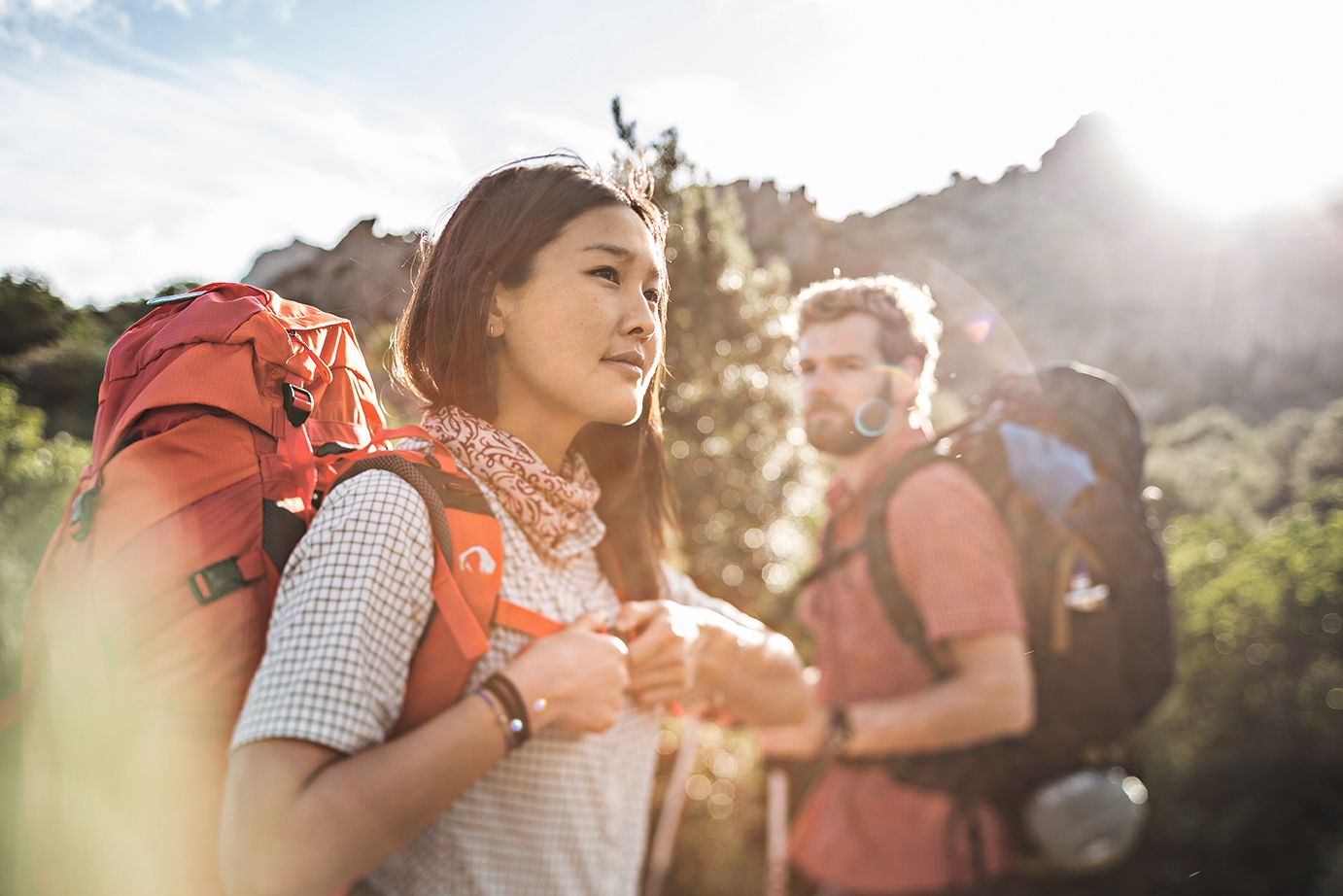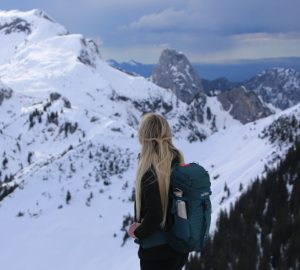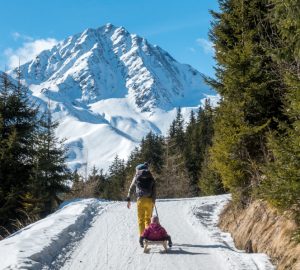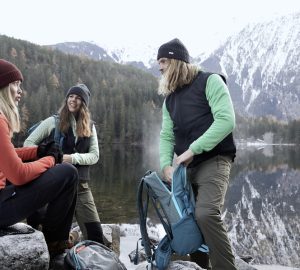Summertime ist the time for hiking. But, if the temperature is rising above the 30-degree Celsius level even in the mountains hiking can swiftly become both exhausting and, as a matter of fact, dangerous too. How to cool down best – read on.
When there’s summer there’s heat. And, of course, there’s always immediately some advice at hand how to cope with these circumstances. Usually, those guidebooks tell you to avoid all physical exercise in hot weather. Though hiking is usually not considered high-performance-sport – on a hot day you might want to mind the aspects following:
#1 Start early
The earlier you start a hiking tour in mid-summer the better since you’re done with the hardest part when temperature reaches its peak. Even though there’s this well spread myth of “noonday heat”, in fact temperatures are highest at around 4 to 5 p.m. not around midday. So it’s always a good idea to do most of your tour in the morning to bypass heavy sweating.
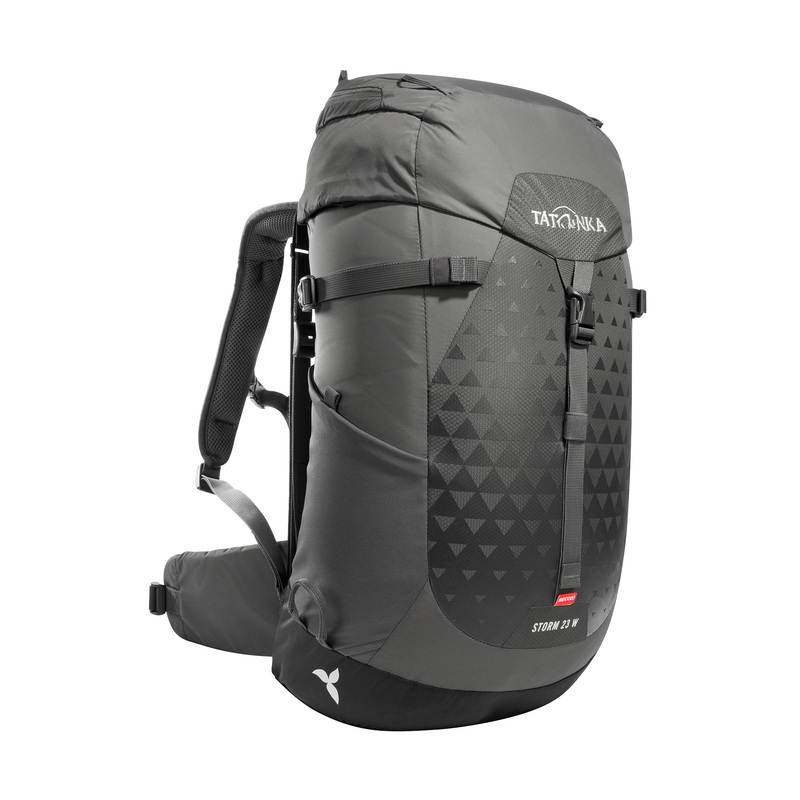
Hiking backpacks by Tatonka with their ventilated X Vent Zero carrying system are the perfect companions on hot hiking days.
And there’s a second reason for starting early: heat thunderstorms. Statistically speaking, they mostly occur in the afternoon. Especially in the mountains, such a phenomenon arises quite swiftly and heavily. Therefore, always have an eye on the conditions and try to check the weather forecast on a regular basis to avert being surprised by a sudden change of weather.
Another clever idea is to start the night before the actual hike and sleep in a cabin. The early hours on a hot day are way too valuable to waste them on an endless, boring trail. To begin the second part of your tour from the cabin’s altitude has some benefits: you can leave unnecessary equipment behind, you can enjoy a marvelous view in no time and you’re immediately back for some shelter if the heat becomes unbearable or a perilous storm is approaching.
Also intersting: How to adjust your hiking backpack
#2 Choosing the appropriate trail
To avoid the highest temperatures while hiking you better look up a tour which isn’t exposed to the sun during the hottest hours of the day. Trails on the north face of a mountain or paths crossing the woods are the right choice.
A forest gives shade and provides some cool air: trees transport water with their roots from the soil via the trunk to the crown of the tree. There the water evaporates which leads to evaporation chill. Consequently, a hike through the woods can be quite comfortable during summertime.
However, above tree level it’s a few degrees colder due to the altitude itself. Yet, you want to take care of sun protection instead.
Tip: How about choosing a trail leading to a mountain lake? Probably, there’s nothing more refreshing. But, don’t jump into the lake without adapting slowly to the water’s temperature – it might be freezing cold which can be dangerous for your body.
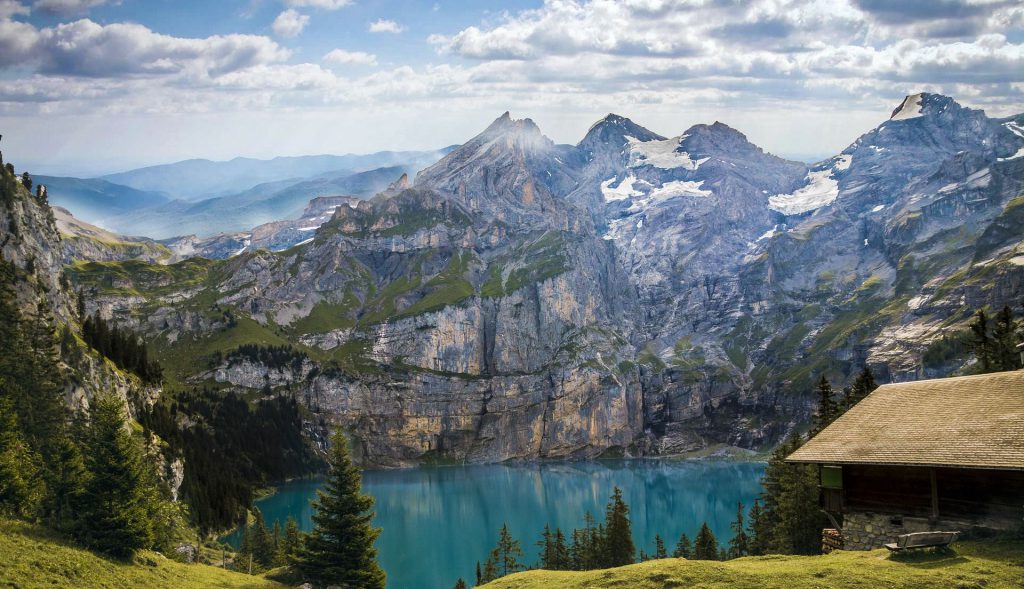
#3 Drink: regularly and enough
To drink enough on a hot day shouldn’t be any news. If you feel thirsty it’s too late, already. You better drink little sips frequently. That’s more appropriate for the body to process than large amounts at one point. If you should be sweating heavily feel free to drink some squash (containing water with a high level von sodium and some juice of your choice) besides the normal water. This isotonic drink helps your body to sufficiently regain your blood sugar and minerals level.
The Alpenverein (German Alpine Association) recommends a hydration bladder for such hikes. Thereby, you don’t need longer breaks to drink some water.
By the way: Alcohol free beer is isotonic as well and quite tasty making it a nice reward at the mountain hut of your choice.
#4 Don’t forget sun protection
A sun blocker with a high SPF is definitely a must-have for hiking in summer – and don’t forget your lips since they need protection too. You can simply use sun blocker or special lip ointment with SPF. In addition, you should shield your eyes against the aggressive UV radiation as well by covering them with high-quality sunglasses. Furthermore, a hat would make sense (more below).
At some high altitude UV radiation is more intense than on sea level. Thus, it can be helpful to simply wear a long-sleeved shirt (for example a merino-wool pullover). Such a shirt isn’t just protecting your skin from the sun, additionally, it carries the sweat away from your body more easily than normal cotton and comes with a high wearing comfort as well.
Also interesting: Camping in a thunderstorm
#5 Resting in the shadow
Equally crucial in hot weather: taking enough breaks! This sounds like common knowledge but it is fairly important for your body since the high surrounding temperature can quickly cause exhaustion. Plus, there’s a possibility of hazardous sun and heat strokes. Next to sun protection for head and neck you must prevent your body from overheating. Regular stops in the shadow help to do so.
Also interesting: Hiking backpack or trekking backpack – which backpack is right for me?
#6 Using evaporating chill
A multifunctional kerchief or a bandana are quite handy at high temperatures. Wrapped around your head the kerchief avoids, on the one hand, sweat dripping into your eyes. On the other hand, you can simply wet it whenever you want to – the colder the water the more comfortable. Event though it might be getting warmer and warmer the moist fabric provides some lovely cooling due to evaporating chill.
Creeks and wells can help you to cool down with the same effect too: take a break, wet your arms and legs and let the sun dry them. A moist towel around the neck is also nicely cooling.
With those tips in mind even a hot summer day’s hike can be great fun. And that’s what hiking should be all about: a good time! Don’t take unnecessary risks and consider your body’s signals. Better choose a shorter trail, and, if it’s exceptionally hot: maybe a day at the lake or kayaking on a cool river is a better idea than an exhausting hike.




